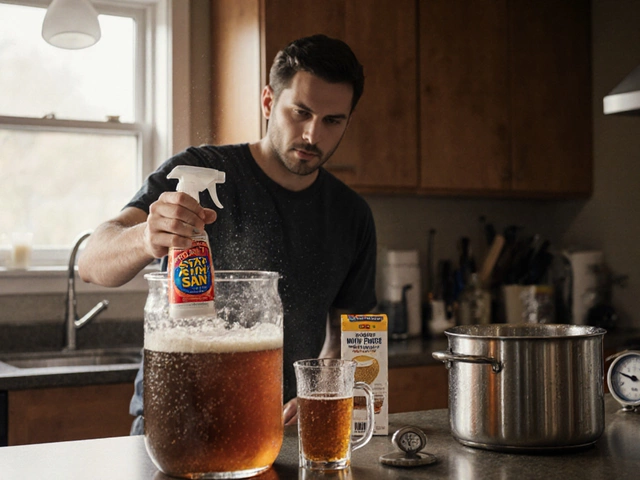Beer Crafting Essentials for Every Home Brewer
If you’ve ever wondered how to turn a simple grain bill into a tasty pint, you’re in the right spot. Beer crafting is all about mixing science, patience, and a love for flavor. On this page you’ll find quick how‑tos, handy recipes, and the most popular posts from our community.
Getting Started with Beer Crafting
The first step is picking the right kit. A basic all‑grain setup gives you control over malt, hops, and water chemistry. If you’re short on space, a brew‑in‑a‑bag (BIAB) system works just as well and costs less. Keep a temperature‑controlled fermenter; yeast loves stable temps and will thank you with clean flavours.
Next, choose a style that matches your taste. Want something crisp and easy? A pale ale is forgiving for beginners. Craving richer notes? Try a stout or a Belgian ale. Our post “What Is the Number One Beer in the World? A Deep Dive into the Best Beer Brands” walks you through top‑rated beers and why they work, giving you a clear benchmark for your own batch.
Don’t skip sanitation. A quick rinse with Star‑San or a diluted bleach solution can prevent off‑flavours that ruin a brew. After you’ve sanitized, measure your specific gravity with a hydrometer or refractometer. This number tells you how much sugar is left for the yeast to turn into alcohol, and it’s the easiest way to predict your ABV.
Advanced Techniques & Inspiration
Once you’ve mastered a basic recipe, experiment with hop timing. Adding hops at the start gives bitterness, while late‑add or “dry‑hop” adds aroma without extra bitterness. Our article “Best Foods to Eat Before a Whisky Tasting: Enhance Your Palate” shows how palate preparation works—use the same idea for beer by tasting hops alone to understand their profile before adding them to the kettle.
Experiment with alternative grains like rye or oats for extra body. If you love fruit, toss in frozen berries during secondary fermentation. The post “Best Healthy Mocktails: Nutritious Non‑Alcoholic Drinks for Wellness” highlights how fresh ingredients can boost flavour without extra sugar—apply that logic to your wort.
Keep a brewing journal. Note grain amounts, hop schedules, fermentation temps, and tasting impressions. Over time you’ll spot patterns and improve consistency. For inspiration, browse our tag archive; you’ll find stories ranging from classic cheese‑wine pairings to quirky “rich girl drink” ideas that spark creative mash‑ups.
Finally, share your brews. A tasting with friends lets you gather feedback and discover new food pairings. If you’re unsure what goes well with your beer, check out our “Best Mixers for Vodka: Top Pairings, Tips, and Surprising Combos” guide—the same principles of balance apply to beer and food.
Beer crafting is a journey, not a race. Start simple, keep things clean, and let curiosity drive you. With the right tools, a solid recipe, and a dash of experimentation, you’ll be pulling a fresh pint for yourself and your mates in no time.
Brewing beer at home can be a rewarding and enjoyable process. The time it takes depends on several factors including the type of beer and the method used. Beginners typically take around four weeks to complete a batch, which allows for fermentation and conditioning. With the right tools and patience, anyone can create a delicious brew from the comfort of their home. Having fun and experimenting with ingredients can lead to wonderfully unique flavors.
View Details

